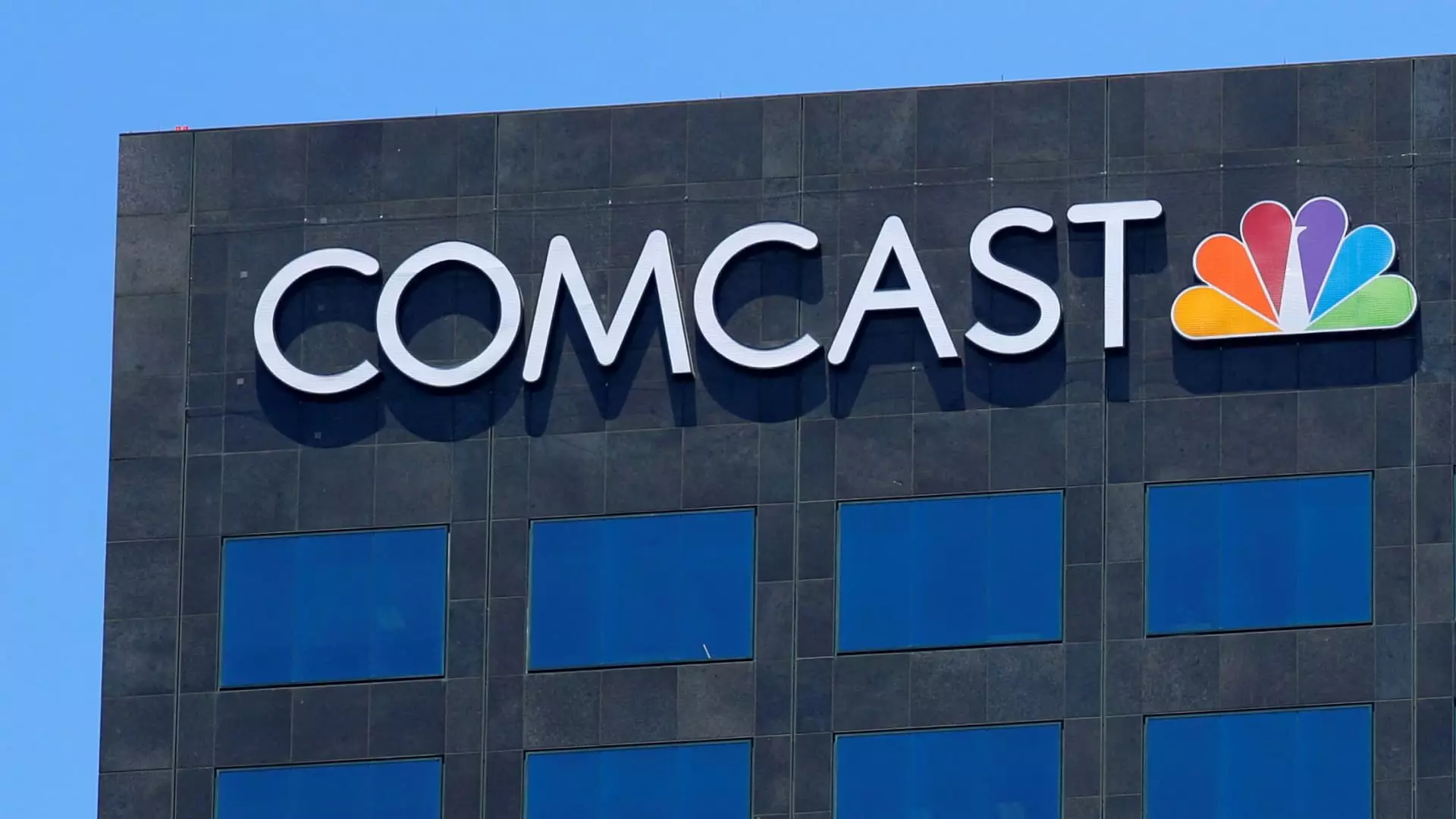In a bold move reflecting the brutal realities of contemporary media consumption, Comcast is embarking on a significant reorganization of its cable network assets. Rumors of a spinoff have evolved into an anticipated restructuring that may reshape the landscape of cable media, especially as it grapples with the existential threat posed by streaming services. As subscribers increasingly abandon traditional pay-TV packages, Comcast’s decision signals a critical shift in strategy that may offer new growth avenues and operational flexibility in a rapidly changing marketplace.
Recent announcements reveal the leadership structure for the newly separated entity. Mark Lazarus, who currently serves as the chairman of NBCUniversal’s media group, is set to take the helm as CEO of the newly formed company. His extensive experience and deep knowledge of the media landscape position him as a capable leader for this transition. Also announced was Anand Kini, the CFO of NBCUniversal, who will assume the role of Chief Financial Officer and Chief Operating Officer of this new entity.
Importantly, while Comcast Chairman and CEO Brian Roberts will retain a voting position, he will not take up any operational or directorial roles within the forthcoming corporation. Such changes suggest an attempt to balance governance with operational independence, allowing for more focused leadership that aligns with the unique challenges facing the standalone cable networks. This strategic maneuver could delineate responsibilities and focus on profitability in a fragmented media environment.
The rationale for Comcast’s decision to spin off its cable channels, which include popular networks such as USA, E!, and Syfy, can be attributed to the ongoing decline of pay-TV subscriptions. As millions of consumers migrate toward on-demand streaming options, Comcast’s traditional cable model is under increasing pressure. By spinning off its cable networks, the company aims to create a more agile and responsive entity that can tailor its operations and content to an audience that has become more fragmented on platforms like Peacock.
Furthermore, the spinoff opens up various strategic possibilities. Sources indicate that the new, independent network entity may pursue mergers with complementary networks or even entertain acquisition offers from private equity firms seeking undervalued assets amid the turbulence of the media industry. This potential flexibility could lead to innovative partnerships that enhance the market position of the separated business, enabling it to capture new revenue streams.
Despite the impending separation, some vital elements of Comcast’s media strategy will remain tightly integrated. For instance, the NBC broadcast network and Peacock, Comcast’s streaming service, will continue to align closely with the core cable business. This strategic retention signifies that while the cable segments will operate independently, the broader portfolio will still benefit from shared resources and cross-promotional opportunities.
Interestingly, Bravo, a significant player in the network lineup, will remain within the existing Comcast framework due to its heavy inclusion in Peacock’s content offerings. This showcases an understanding of audience behavioral trends and the growing importance of streaming services in driving viewership and engagement.
Financial Implications and Market Reactions
From a financial perspective, Comcast’s third-quarter report highlighted the enduring profitability of its media segment, reporting a 37% revenue increase largely attributed to the Olympics. This success underscores the financial resilience of traditional cable networks, even as they face disruption from digital counterparts. Reports indicate that the spinoff will be tax-free, and the new entity will mirror Comcast’s existing share structure, which may be designed to ease concerns about investment risk among shareholders during this transition.
In the immediate aftermath of these announcements, shares of Comcast experienced a rise, reflecting optimistic market sentiment about the potential for more specialized and streamlined operations that could yield higher returns and shareholder value in the long run.
As Comcast embarks on this ambitious transformation, the implications of the spinoff extend far beyond mere restructuring—they represent a strategic recalibration to align with shifting consumer preferences in media consumption. With visionary leadership at the forefront and new operational opportunities on the horizon, Comcast’s move reinforces the notion that adaptability is essential for survival in the face of the streaming phenomenon. Only time will tell if this strategic decision will bolster Comcast’s market position or if it will merely be a temporary fix in a rapidly evolving media landscape.


Leave a Reply